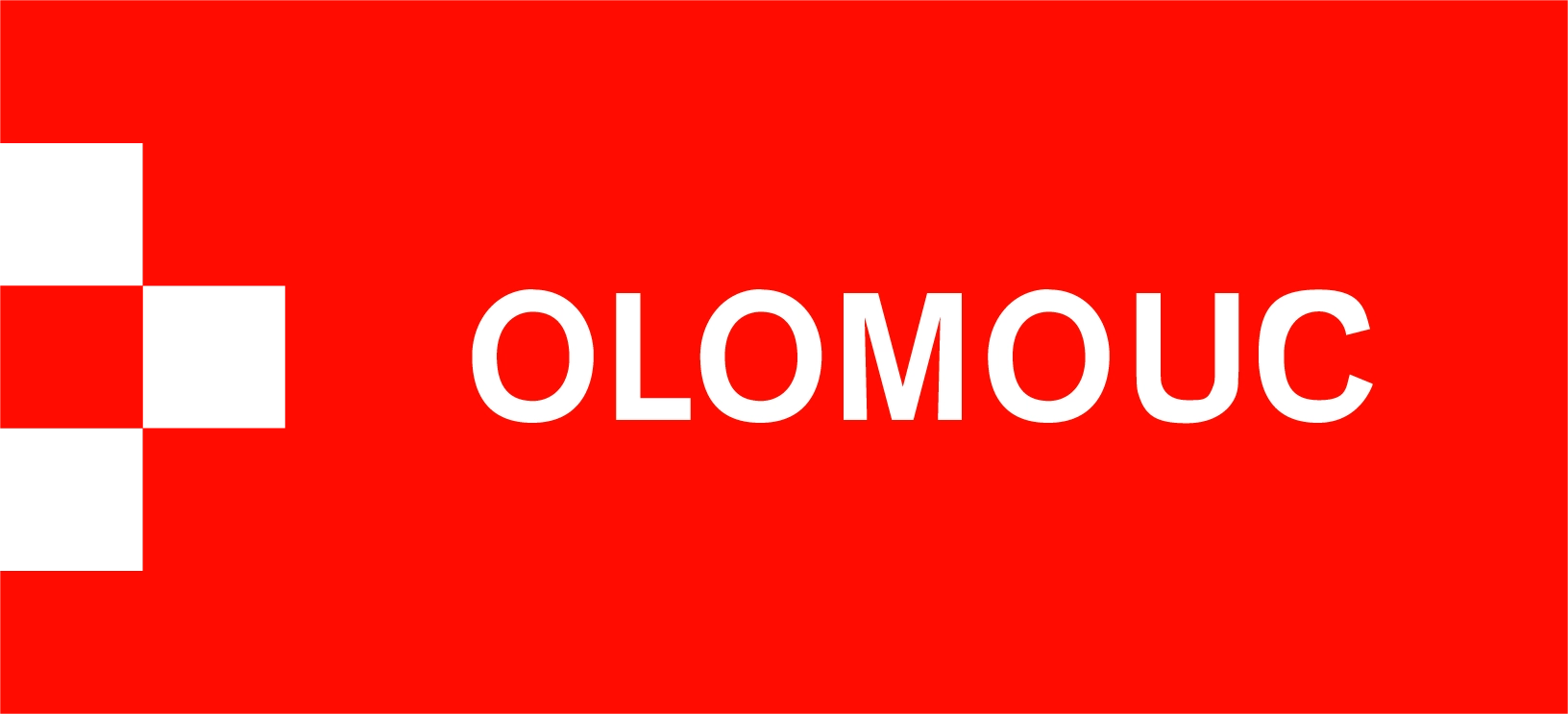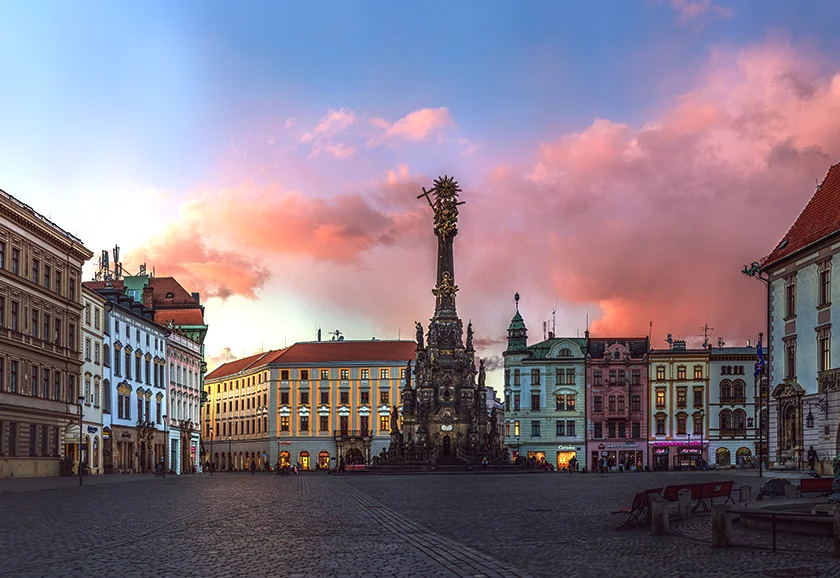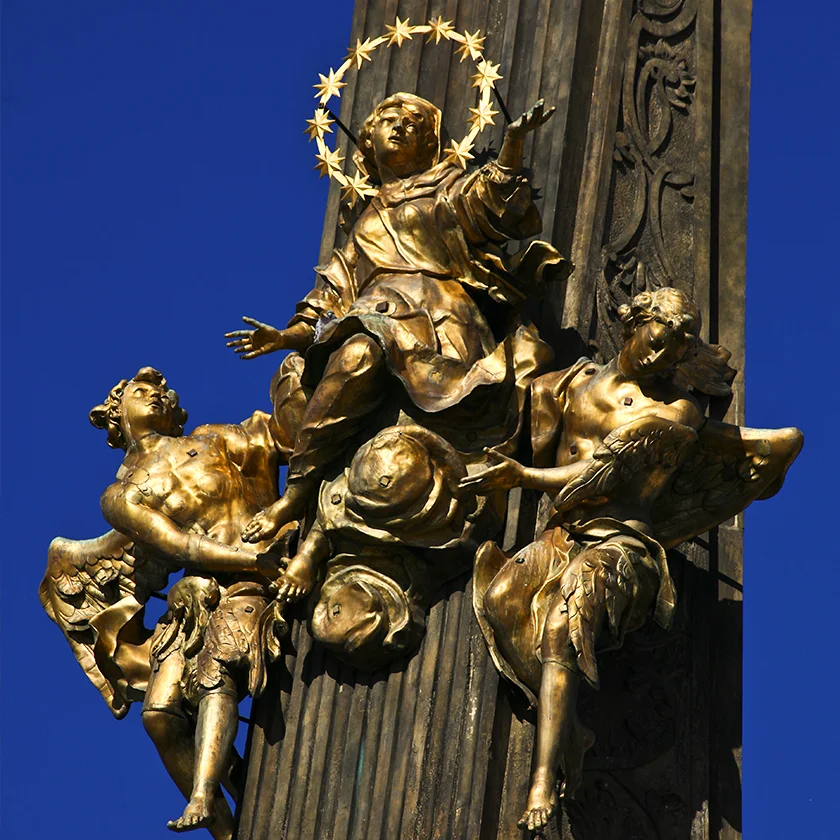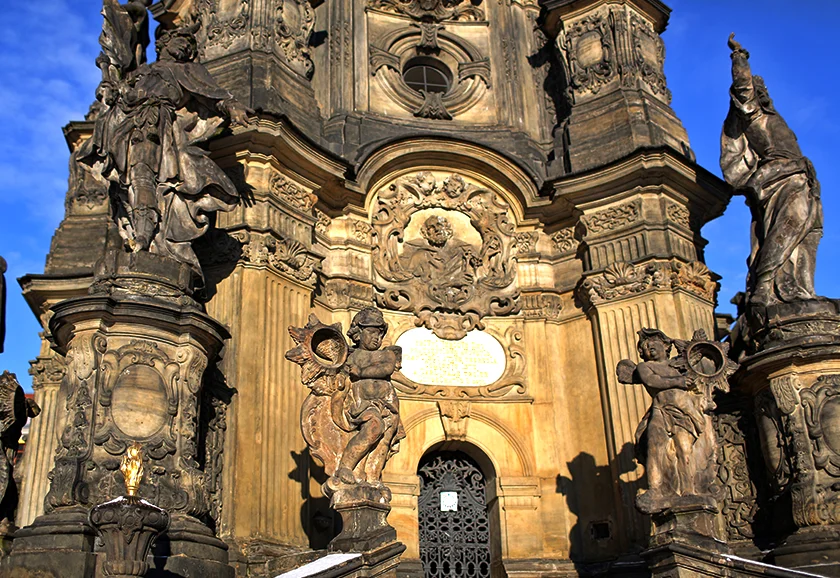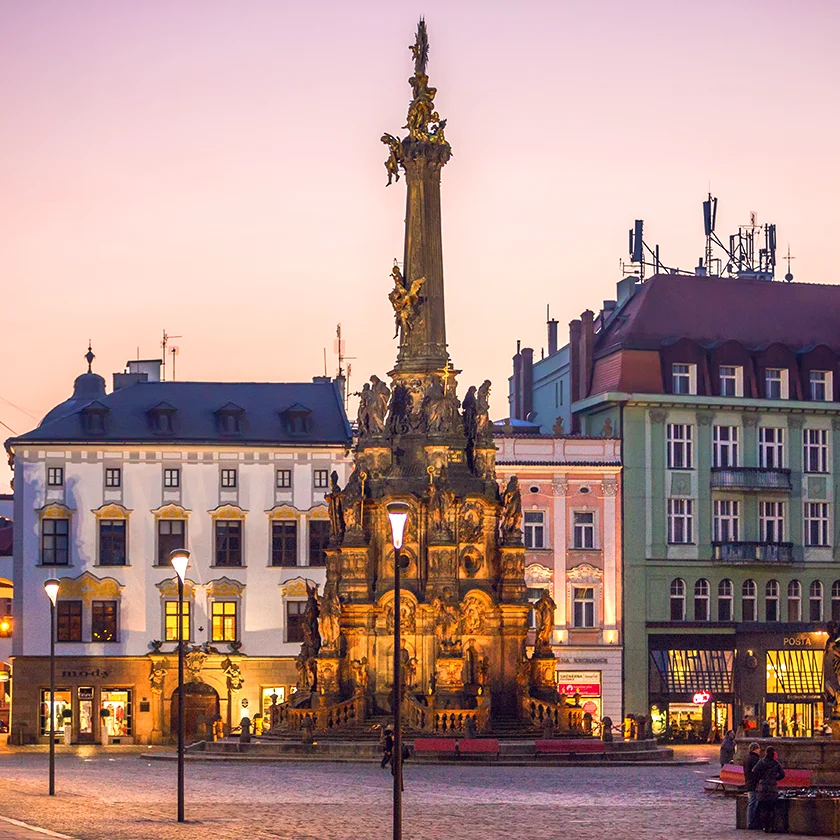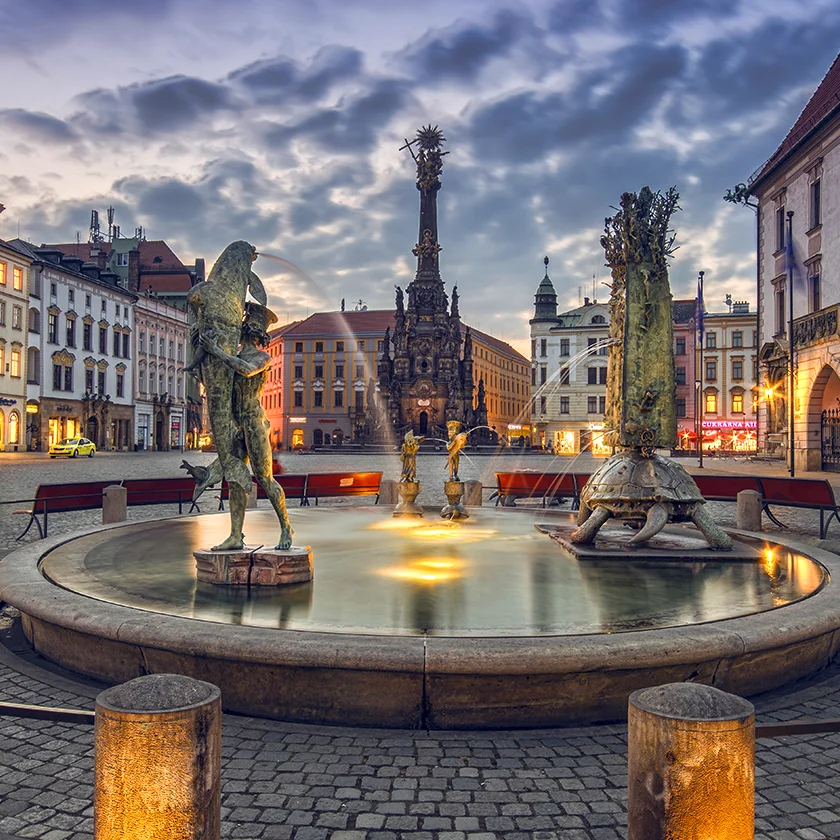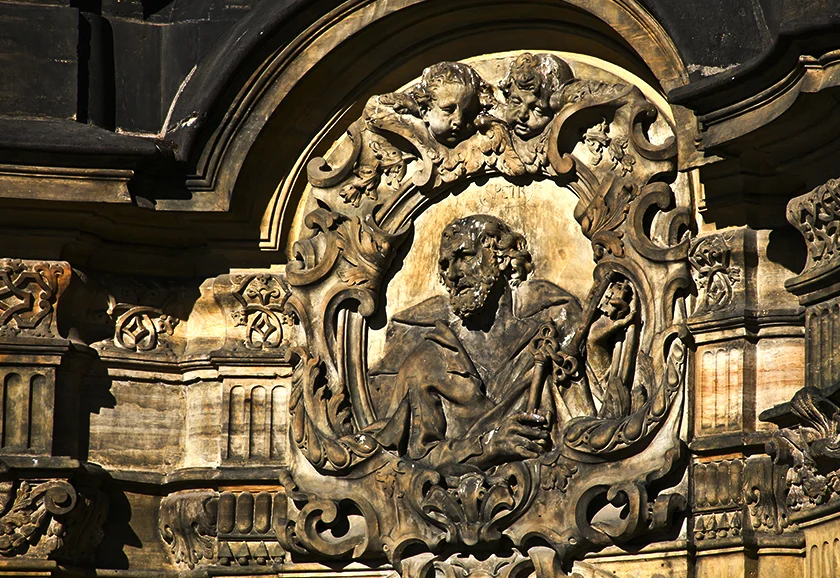Trinity
Column
Briefly
about the column
The Holy Trinity Column in Olomouc, inscribed on the UNESCO World Heritage List in 2000, is a unique gem of the city. It captivates with its beauty, sculptural diversity, precision, size, and spiritual message.
Located in the Upper Square in Olomouc, the Holy Trinity Column represents an outstanding work of High Baroque, a period marked by exceptional architectural and artistic development in the city.
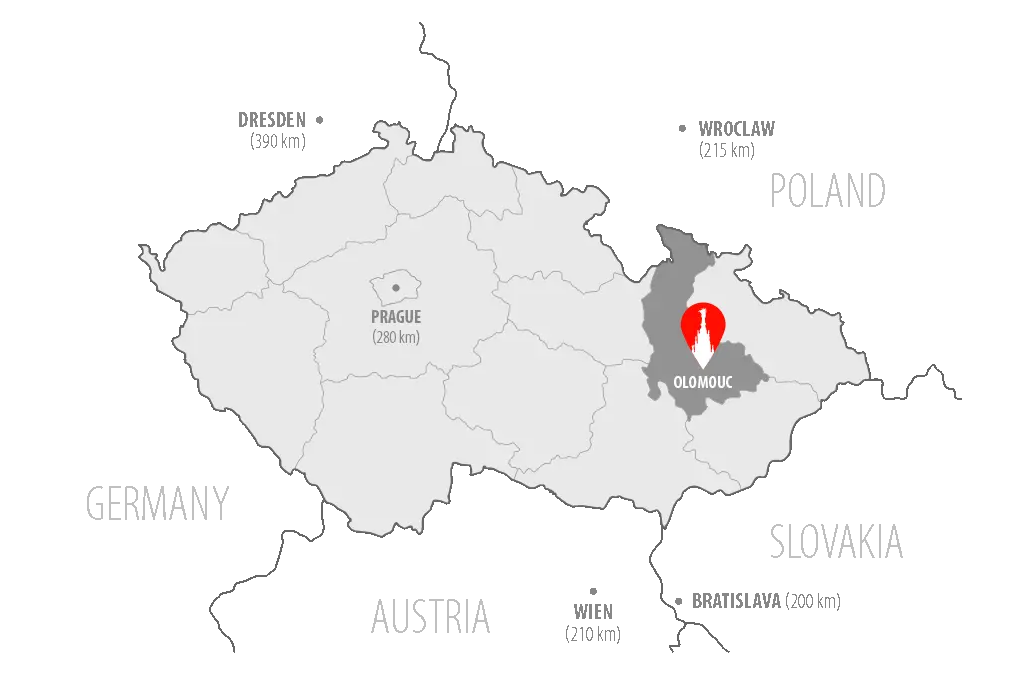
About the author
Václav Render
August 31, 1669 (baptized) Olomouc – August 3, 1733 Olomouc
Václav Render was an imperial privileged architect and stonemason.
He began his career as an apprentice to local stonemason master Václav Schüller, later gaining experience in Kroměříž and then as a journeyman in Wrocław. Render returned to Olomouc in 1694, becoming a citizen and stonemason master. His workshop grew into one of the largest enterprises in Moravia. His reputation extended beyond the margraviate’s borders, successfully competing with even the Viennese stonemason masters.
He worked as a sculptor, designing and constructing columns, fountains, and other architectural masterpieces that still stand as a testament to his craftsmanship. Among these are the plague columns of the Virgin Mary in Litovel, Zábřeh, Mohelnice, Moravská Třebová, Uničov, and Šumperk. In Olomouc, his hand is evident in the monumental altar of St. Pauline in the Church of St. Maurice, most of the city’s fountains, and the portal of the Church of Our Lady of the Snows. He also contributed to the completion of the pilgrimage church at Svatý Kopeček and construction works for the Hradisko Monastery.
His grand designs for the Marian Column in the Lower Square and the monumental Holy Trinity Column immortalized his name and made him one of Olomouc’s most renowned figures.
Václav Render owned a house at No. 7, 8. května Street in Olomouc and is buried in the Church of St. Maurice in Olomouc.
A bit of
history
The construction of plague columns spread after the Council of Trent as a Baroque element, inspired by the column in Piazza Santa Maria Maggiore in Rome from 1614. Olomouc’s Holy Trinity Column is one of the last examples of this trend. However, it no longer refers to the end of a plague but serves as an honorary triumphal column.
The building of the Holy Trinity Column in Olomouc began in 1717 and took 37 years to complete, finishing in 1754.
It is a masterpiece created by several artists and master craftsmen. The original design of the column was by Václav Render, an Olomouc stonemason master and architect. He built the column up to the first level, completed the chapel, and some of the sculptural decoration. The work was later carried on by stonemason masters František Thoneck, Jan Václav Rokický, Augustin Scholz, and Jan Ignác Rokický. The magnificent sculptures were started by Filip Sattler, and after his death, continued by Ondřej Zahner, who created 18 statues of saints, 9 reliefs, and figures of torchbearers. Zahner also modeled the Assumption of the Virgin Mary in the middle of the column and the summit group of the Holy Trinity with Archangel Michael, which were crafted from copper and gilded by Šimon Forstner.
Unique
sculptural
decoration
The column is adorned on three levels with 18 statues of saints, 12 figures of torchbearers, 12 reliefs of apostles, and 3 reliefs of the main Christian virtues – allegories of Faith, Love, and Hope.
In the middle section of the column, there is a gilded copper sculptural group of the Assumption of the Virgin Mary, and at the top, the radiant sculptural group of the Holy Trinity with Archangel Michael.
In the lower part of the column, there is a small chapel with a domed vault.
The architecture of the column, including its relief decoration, is made of Maletín sandstone, while the statues were crafted from higher-quality sandstone from Mladějov.
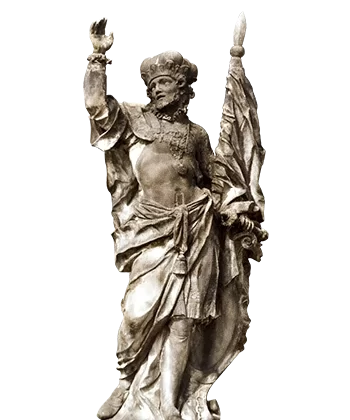
Statue
- Václav
The Přemyslid prince, Saint Wenceslas, has played a key role in Czech history for over a thousand years. He is one of the most beloved and venerated national saints, symbolizing moral values and national identity.
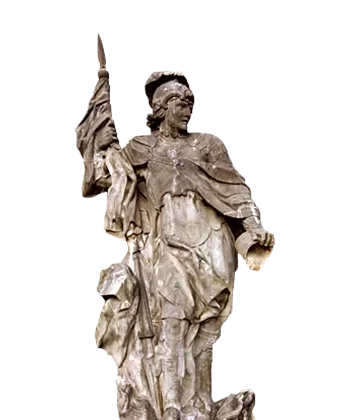
Statue
- Florián
Saint Florian was venerated as a protector against fires, which in the past posed one of the greatest risks to both cities and villages. His veneration spread especially during times when fires endangered entire communities.
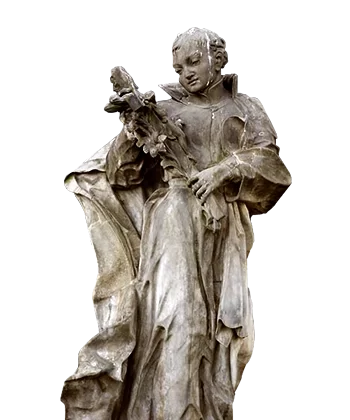
Statue
- Alois Gonzaga
Aloysius Gonzaga, a member of the prominent Mantuan noble family, entered the Jesuit order at the age of seventeen, despite his father’s opposition. From the outset, he was known for his deep piety and strict asceticism.
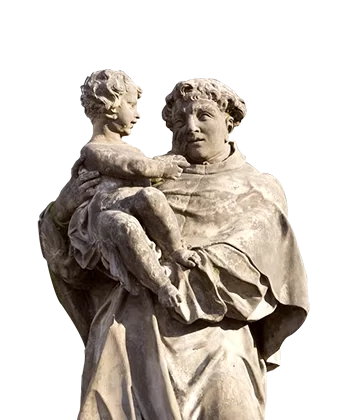
Statue
- Antonín Paduánský
Saint Anthony, one of the most beloved saints of the Baroque era, was born into a noble family in Lisbon. At the age of fifteen, he entered the Augustinian order, where he received an excellent education.
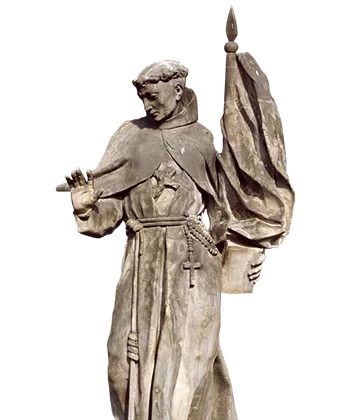
Statue
- Jan Kapistrán
Saint John of Capistrano, a prominent preacher of the 15th century, collaborated with Saint Bernardino of Siena, the founder of the Observant branch of the Franciscan Order. His preaching had a profound impact on the Church of that time.
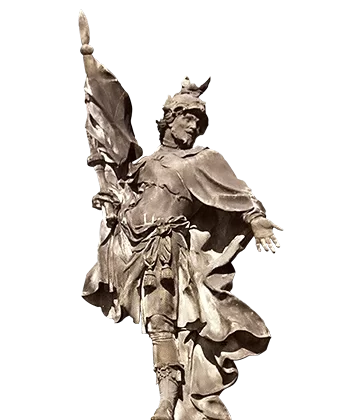
Statue
- Mořic
Saint Maurice, one of the most venerated saints from the Roman era, was the commander of the Theban Legion, which was composed of Coptic Christians recruited from the area around Thebes in Egypt. This legion served under the Roman Emperor Maximian.

Statue
- Cyril
Saint Cyril, born around 827 in Thessalonica, came from the family of a high-ranking official. He studied theology, philosophy, and literature in Constantinople, which prepared him for his later missionary work.
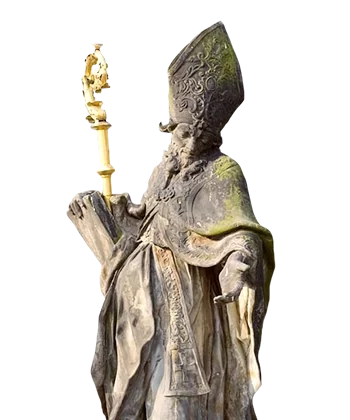
Statue
- Vojtěch
The saint is depicted with episcopal insignia – a cope, a mitre, and a crozier. To his left, next to the crozier, remains the attribute of an oar. Unfortunately, the original metal handle of the oar has not survived, but its significance endures.

Statue
- Jan Nepomucký
Saint John of Nepomuk, the patron saint of the Czech lands and co-patron of Bavaria and the Diocese of Salzburg, was one of the most popular saints during the Baroque period in the Habsburg monarchy, where his veneration reached its peak.
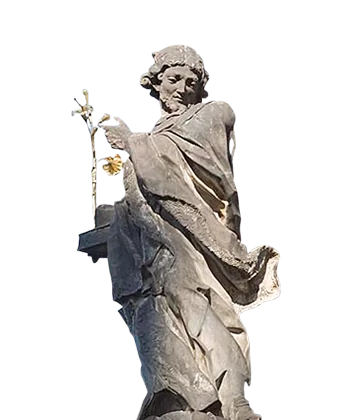
Statue
- Jan Sarkander
Priest and martyr Saint John Sarkander is one of the main patrons of the Olomouc diocese. He was born in 1576 in Skoczów, in the region of Cieszyn. His life and martyrdom left a profound mark on the history of the Church.
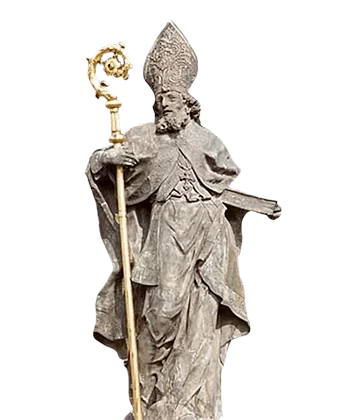
Statue
- Blažej
The saint is traditionally depicted with episcopal insignia: a cope, a stole, a pectoral cross around his neck, and a mitre on his head. These symbols of his status and reverence in the Church are key elements in the iconography of saints.
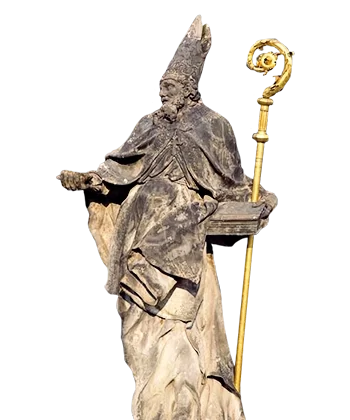
Statue
- Metoděj
Saint Methodius, the elder brother of Saint Cyril, was born in Thessalonica in 815. After a career as a Byzantine official, he entered monastic life and eventually became the first archbishop of Moravia.
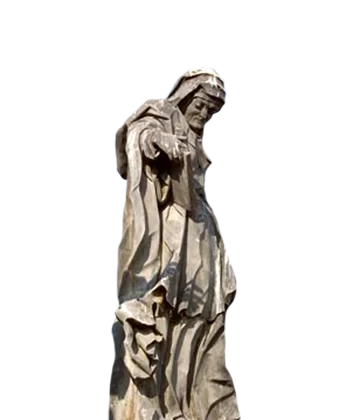
Statue
- Anna
The female saint, who alongside the Virgin Mary is the only woman depicted on the column, is her mother and belongs to Christ’s family. Her portrayal emphasizes the importance of her role within the family circle.
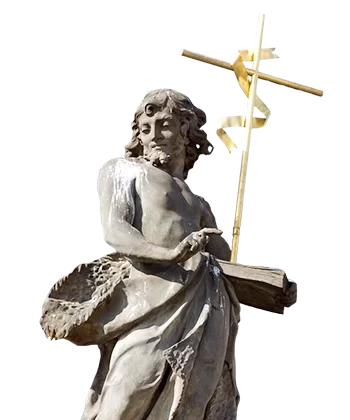
Statue
- Jan Křitěl
Saint John the Baptist is considered one of the most striking stone statues on the column. The closed form of the figure, enhanced by a slight rotation, adds dynamism to the statue, with the blessing gesture of the raised right hand.
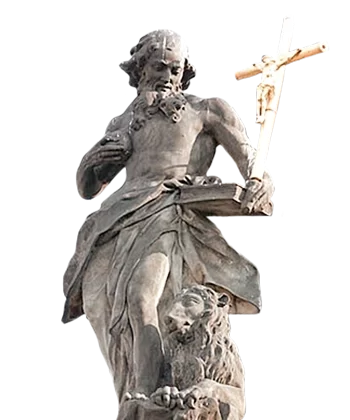
Statue
- Jeroným
Saint Jerome, a prominent theologian and writer, is renowned primarily for his translation of the Bible from Greek and Hebrew into Latin. His work had a profound impact on Christian literature and continues to influence the interpretation of Scripture to this day.

Statue
- Vavřinec
Saint Lawrence is depicted on the column as the second patron of Olomouc’s town hall chapel and is among the most venerated saints in the Christian world, alongside Saints Peter and Paul, who are also significant figures of faith.
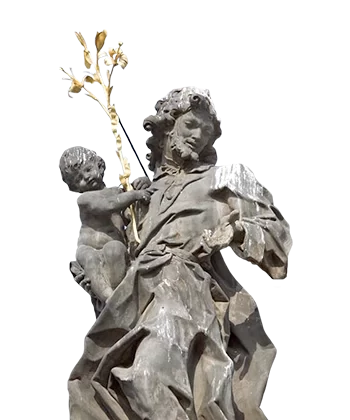
Statue
- Josef
Saint Joseph holds a prominent position among the saints, being one of the most revered and beloved figures in history. His exceptional veneration has lasted for centuries and he continues to remain a key figure in the Christian world.
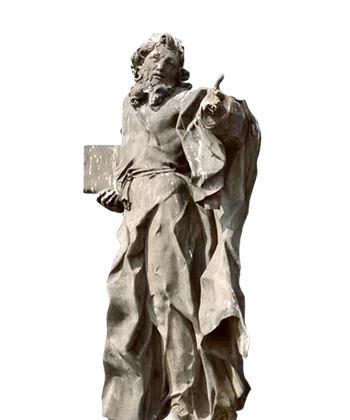
Statue
- Jáchym
The statue of Saint Joachim is dynamically balanced with its counterpart, the statue of Saint Anne, forming a striking compositional group. Along with the summit sculptures, it is one of the most prominent features on the entire column.
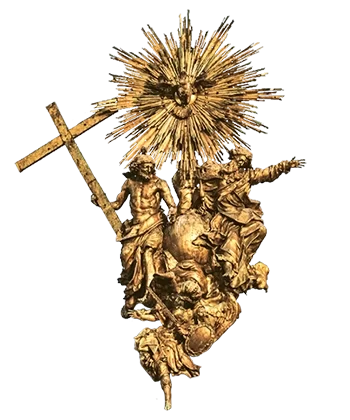
Sculptural group
- NEJSVĚTĚJŠÍ TROJICE
The sculptural group at the top of the column represents the Holy Trinity from the Psalter. It depicts Christ, God the Father, and above them hovers the dove of the Holy Spirit. This compositional type is a key element of Baroque art.
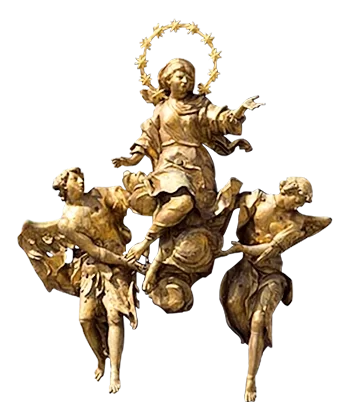
Sculptural group
- NANEBEVZETÍ PANNY MARIE
The Assumption of the Virgin Mary is located approximately one-third of the way up the fluted column. It depicts the Virgin Mary rising on clouds with her arms outstretched, symbolizing acceptance and openness.
Interesting facts
Did you know:
the column, standing at 32 meters, is the tallest Baroque sculpture in Central Europe?
the construction of the column took a long 37 years?
the original site of the column was once occupied by the Hercules Fountain?
Václav Render, the main creator of the column, bequeathed his entire estate to its completion?
none of the main creators of the column lived to see its completion?
one of the statues of saints is dedicated to John Sarkander, who at the time of the column’s construction had not yet been canonized or beatified?
the sandstone column was originally white due to a coating meant to imitate more expensive marble?
only the priest could fit inside the small chapel during sermons? The faithful stood outside and listened to the priest’s voice through acoustic openings.
Czech republic
Olomouc
Olomouc, the sixth-largest city in the Czech Republic, is considered the jewel of Moravia thanks to its rich history, ancient university, and cultural traditions. Its historic center, featuring prominent landmarks such as the Holy Trinity Column, the town hall with its astronomical clock, and six Baroque fountains, forms the second-largest urban conservation area in the country. The city is not only a center of education and spiritual life but also a major destination for tourists and culture enthusiasts.

The project was carried out with financial support from the Ministry of Culture.

Authors and funding of the 3D model of the monument.
